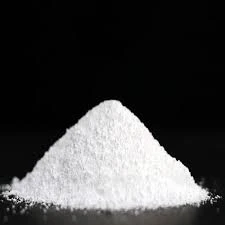The Role of Anionic Polyacrylamide in Modern Applications
Anionic polyacrylamide (APAM) is a synthetic polymer widely utilized across various industries due to its unique properties and functionality. This polymer, derived from the acrylamide monomer, possesses charged functional groups that impart it with anionic character. The ability to form a gel-like structure while retaining water makes it an essential component in numerous applications, ranging from agriculture to wastewater treatment.
Chemical Structure and Properties
Anionic polyacrylamide is characterized by its high molecular weight and the presence of negatively charged carboxylate groups. These charge groups result from the copolymerization of acrylamide with a small percentage of acrylic acid or other anionic derivatives. Due to its structure, APAM can easily absorb water, forming a highly viscous liquid or gel, which is crucial for its applications.
Its molecular weight can vary widely, typically ranging from several hundred thousand to several million Daltons. This variability impacts its performance in different settings; higher molecular weight polymers tend to provide better viscosity and thicker gel formation, while lower molecular weight counterparts may offer quicker dissolution rates and better mobility in solution.
Applications in Agriculture
One of the most significant applications of anionic polyacrylamide is in agriculture, particularly in soil management and erosion control. When applied to soil, APAM enhances water retention, thereby reducing irrigation requirements. It improves soil structure and reduces soil erosion by promoting aggregation, which helps in stabilizing soil particles against water and wind forces.
Furthermore, APAM is often used in agricultural practices for seed coating and fertilizer encapsulation. By adhering to seeds and fertilizers, APAM ensures that these inputs are released gradually into the soil, optimizing nutrient availability and enhancing plant growth. This slow-release mechanism contributes to more sustainable agricultural practices by minimizing runoff and nutrient leaching.
polyacrylamide anionic

Wastewater Treatment
Another crucial application of anionic polyacrylamide is in wastewater treatment. The polymer plays an essential role as a flocculant, assisting in the aggregation of suspended particles in water. This property is particularly beneficial in clarifying water, helping remove contaminants and improving water quality. The negatively charged groups of APAM interact with positively charged particles, forming larger aggregates that can be easily removed through sedimentation or filtration.
By integrating APAM into wastewater treatment systems, industries can enhance the efficiency of their processes, reducing chemical usage and minimizing environmental impact. This is particularly relevant in sectors such as mining, food processing, and municipal wastewater treatment facilities.
Environmental Considerations
While anionic polyacrylamide offers numerous benefits, its environmental impact merits consideration. The polymer is generally regarded as safe, but concerns arise regarding potential leaching and accumulation in water bodies. However, extensive research indicates that when used appropriately and in regulated amounts, APAM does not pose significant risks to aquatic life or ecosystems.
Additionally, ongoing research focuses on developing biodegradable alternatives to conventional polyacrylamides, which aim to retain the beneficial properties while reducing environmental footprint. Advancements in this area could revolutionize the application of APAM, promoting more sustainable practices across various industries.
Conclusion
In conclusion, anionic polyacrylamide stands out as a versatile and effective polymer with numerous applications in agriculture and wastewater treatment. Its ability to enhance soil properties, improve water retention, and facilitate the removal of impurities in water makes it an invaluable tool in promoting sustainability and efficiency. As further research and innovations emerge, the future of anionic polyacrylamide appears promising, balancing industrial need with environmental stewardship. Whether it's optimizing agricultural productivity or enhancing water quality, APAM continues to play a vital role in addressing some of the most pressing challenges in modern society.

